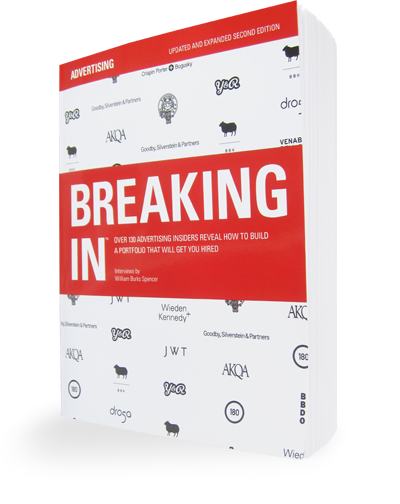Take a look at some great TV from Goodby Silverstein & Partners.
WS: What do you look for in a student book? And what impresses you?
JG: I look for things that no one I know, even myself, would ever come
up with. If your solution is something that your friends or family might
come up with, throw it away.
WS: How important is finish? If ideas are the most important thing, can
sketches be enough? Do you look at physical books anymore, or is it all
websites?
JG: I look mostly at digital books these days, but that doesn’t mean
there wouldn’t be a notable place for a portfolio put together with Skil
Saw, Dremel tool, and black masking tape.
Finish isn’t important to me because I can imagine what the thing might
be like. But the majority of creative directors care about finish, I think.
They see it as a demonstration of taste and hand skills.
WS: How important is writing? Do you need to see long copy?
JG: How important is writing? Really? It’s the way we communicate and
organize ideas. Even if you’re writing with pictures, you’re writing.
I like to see some long copy because I believe that people who can write
longer-form stuff are better at writing short form too. They know what to
take out.
WS: What do you think of showing work that is not advertising?
JG: I love it. Much better than showing that Bagel Bites retail thing that
never quite got produced.
WS: Do you have any other advice for a student or junior trying to get
into the business?
JG: Try to look at the world through the eyes of a busy creative director
who doesn’t really care who you are. As David Ogilvy said, “When selling
fire extinguishers, open with fire.”
Read the full interview in BREAKING IN: Learn more about the book or Buy it on Amazon
The book contains over three times more interview content.



